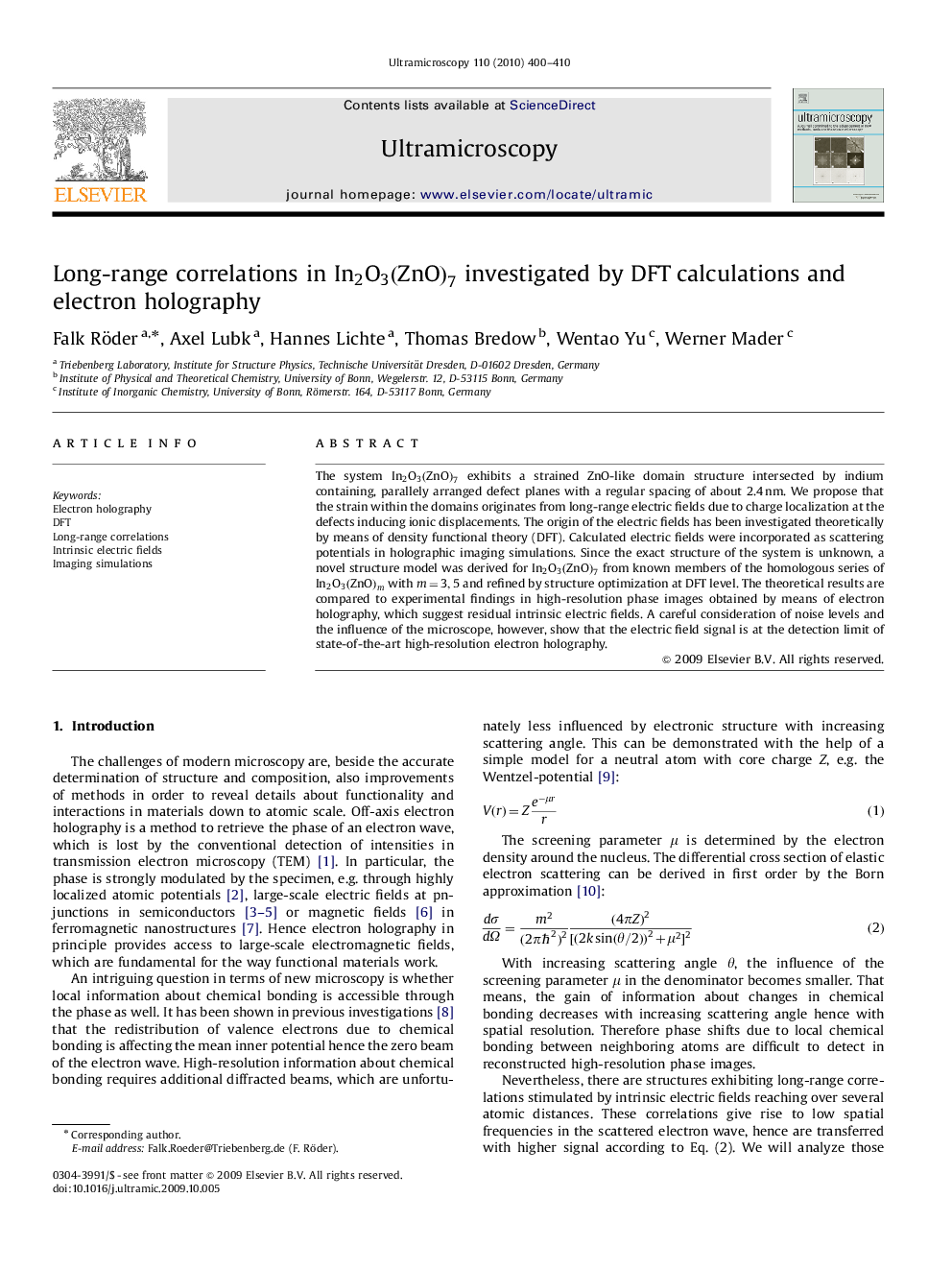| Article ID | Journal | Published Year | Pages | File Type |
|---|---|---|---|---|
| 1678601 | Ultramicroscopy | 2010 | 11 Pages |
The system In2O3(ZnO)7In2O3(ZnO)7 exhibits a strained ZnO-like domain structure intersected by indium containing, parallely arranged defect planes with a regular spacing of about 2.4 nm. We propose that the strain within the domains originates from long-range electric fields due to charge localization at the defects inducing ionic displacements. The origin of the electric fields has been investigated theoretically by means of density functional theory (DFT). Calculated electric fields were incorporated as scattering potentials in holographic imaging simulations. Since the exact structure of the system is unknown, a novel structure model was derived for In2O3(ZnO)7In2O3(ZnO)7 from known members of the homologous series of In2O3(ZnO)mIn2O3(ZnO)m with m=3,5m=3,5 and refined by structure optimization at DFT level. The theoretical results are compared to experimental findings in high-resolution phase images obtained by means of electron holography, which suggest residual intrinsic electric fields. A careful consideration of noise levels and the influence of the microscope, however, show that the electric field signal is at the detection limit of state-of-the-art high-resolution electron holography.
